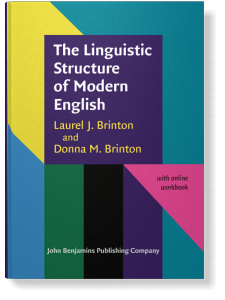Workbook

This web site contains exercises intended to accompany The Linguistic Structure of Modern English; students are directed towards the exercises at various points in the textbook. Answers (or possible answers) are given for all of the exercises so that students may use them for self-testing. However, some of the exercises may require explication or elaboration by the instructor, and class discussion will be important for students' full understanding of the exercises. Most of the exercises consist of problem solving; sets of data (exclusively from English) are presented, which the student must analyze using the terminology and analytical methods provided in the textbook. The answers are generally of an objective kind. More open-ended questions, such as discussion questions or research problems, are left to the course instructor.
The purpose of the exercises in this workbook is to require students to apply the concepts and techniques of analysis presented in the textbook. Simply acquiring a general understanding of the concepts of linguistic structure and of the methods of linguistic analysis is insufficient for a full mastery of the material – just as learning the rules of soccer or of chess or the techniques of cooking or of knitting is insufficient for a full mastery of the sport, game, art, or craft. It is only in grappling with real data, seeing the difficulties (and messiness) of language, and working through the rigors of linguistic analysis that students can achieve a solid understanding of the functioning of the English language and hope to apply this knowledge in novel contexts, such as first- and second-language teaching, literary stylistic analysis, or the other purposes that a knowledge of the linguistic structure of English serves.
The exercises are not graded in most cases, but range in level of difficulty from quite elementary to more advanced. Instructors may choose the level of difficulty in assignments that they deem most appropriate for their students. Most of the exercises have been tested in the classroom, but some were newly written for publication.